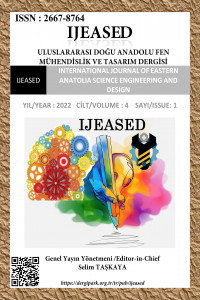Review
Year 2022,
Volume: 4 Issue: 1, 53 - 66, 15.07.2022
Abstract
Sports competitions have become more professional day by day and accordingly, their popularity has increased among the people. Football, which is one of the sports competitions, has always been one of the most interesting sports branches. The increase in popularity has also increased the number of football fields and the hours of use. Natural grass, which is usually preferred in football fields, struggles in meeting this increased usage. Natural grass, which is preferred in football fields, has had difficulty in meeting this increasing use. The problems encountered in football fields with heavy use and in regions with adverse weather conditions have led the people in the sector to seek alternatives other than natural grass.Hybrid grass or reinforced natural grass system has been tried since 1989 and is considered to be the closest to natural grass standards today. The fact that playability and performance standards reflect the natural grass field standards, increases the preferability of the system by making the hybrid grass stand out. Hybrid grass football fields, which have been preferred in Europe for more than 20 years and become increasingly widespread in our country, are becoming more common day by day, although they cannot completely replace natural grass. In this study, the definition of hybrid grass, the methods of its installation on football fields, and the usability of hybrid grass in football fields were examined by comparing it with football fields with natural grass surface.
Keywords
References
- IFAB, (2018). Laws of the game 18/19, International Football Association Board, Zurich, Switzerland.
- IFAB, (2021). Laws of the game 21/22, International Football Association Board, Zurich, Switzerland.
- SCC, (2018). The Smart Guide to Synthetic Football Fields Including Hybrid Technology, Smart Connection Consultancy, South Melbourne, Victoria, Australia.
- UEFA, (2018). Pitch Quality Guidelines, Natural turf pitch management, Union of European Football Associations, Nyon 2, Switzerland.
- URL-1: https://www.football-stadiums.co.uk/articles/football-pitch-grass-types/, (Erişim Tarihi: 15 Kasım 2021).
- URL-2: https://www.grassmastersolutions.com/en/about-us, (Erişim Tarihi: 10 Kasım 2021).
- URL-3: https://www.stad-en-groen.nl/article/18366/the-road-to-a-fifa-world-cup-pitch, (Erişim Tarihi: 09 Kasım 2021).
- URL-4: https://www.hgturfgroup.com.au/products/hero-hybrid-grass, (Erişim Tarihi: 07 Kasım 2021).
- URL-5: https://www.plastix-world.com/milan%E2%80%A2meazza-stadium-hybrid-grass-wins-on-football-field/, (Erişim Tarihi: 22 Kasım 2021).
- URL-6: https://avengrass.com/hybrid-grass/, (Erişim Tarihi: 03 Kasım 2021).
- URL-7: https://www.xtragrass-hybrid-turf.com/hybrid-turf-system/, (Erişim Tarihi: 05 Kasım 2021).
- URL-8: https://www.sispitches.com/hybrid-grass-guide, (Erişim Tarihi: 06 Kasım 2021).
- URL-9: https://powergrasshybrid.com/contents/2/group/, (Erişim Tarihi: 13 Kasım 2021).
- URL-10: https://www.sispitches.com/products/sisgrass-lite/, (Erişim Tarihi: 10 Kasım 2021).
- URL-11: https://www.grassmastersolutions.com/en/grassmaster-overview, (Erişim Tarihi: 10 Kasım 2021).
- URL-12: https://www.grassmax.com/hybrid-stitching, (Erişim Tarihi: 22 Ekim 2021).
- URL-13: https://www.sispitches.com/products/sisgrass-universal/, (Erişim Tarihi: 12 Kasım 2021).
- URL-14: http://engobel.by/en/blog/gibridnyi-gazon, (Erişim Tarihi: 12 Kasım 2021).
- URL-15: http://www.airfibr.com/en/, (Erişim Tarihi: 11 Kasım 2021).
- URL-16: https://countyturf.co.uk/, (Erişim Tarihi: 13 Kasım 2021).
- URL-17: http://www.fibresand.com/products/fibreturf/, (Erişim Tarihi: 12 Kasım 2021).
- URL-18: https://www.externalworksindex.co.uk/entry/127181/Fibresand-International/Fibresand-rootzone-reinforcement/, (Erişim Tarihi: 22 Kasım 2021).
- URL-19: http://www.fibresand.com/sport/, (Erişim Tarihi: 05 Kasım 2021).
Year 2022,
Volume: 4 Issue: 1, 53 - 66, 15.07.2022
Abstract
Spor müsabakaları gün geçtikçe daha profesyonel hale gelmiş ve buna bağlı olarak da halk arasında popülaritesini giderek artırmıştır. Spor müsabakaları içerisinde yer alan futbolda her zaman en ilgi çekici spor dallarından biri olmuştur. Artan ilgi, futbol sahalarının sayısını ve kullanım saatlerini de arttırmıştır. Futbol sahalarında tercih edilen doğal çim ise artan bu yoğun kullanımı karşılamakta zorlanmıştır. Yoğun kullanımın olduğu futbol sahalarında ve olumsuz hava şartlarının hakim olduğu bölgelerde karşılaşılan sorunlar sektördeki ilgilileri doğal çimden farklı alternatif arayışlarına yönlendirmiştir. Bu sorunlara çözüm bulmaya çalışan sentetik çim üreticileri de 1960‘lardan itibaren yeni nesil çimler üreterek bu sorunlara çözüm üretmeye çalışmışlardır. Hibrit çim ya da güçlendirilmiş doğal çim sistemi, 1989 yılından itibaren denenmeye başlanmış ve günümüzde doğal çim standartlarına en yakın olduğu düşünülen sistemdir. Oynanabilirlik ve performans standartlarının doğal çim saha standartlarını yansıtması, hibrit çimi öne çıkararak sistemin tercih edilebilirliğini artırmaktadır. Avrupa’da yaklaşık 20 yıldan fazladır tercih edilen ve ülkemizde de giderek yaygınlaşan hibrit çim futbol sahaları, doğal çimin yerini tamamen alamasa da gün geçtikçe yaygınlaşmaktadır. Bu çalışmada da hibrit çimin tanımı, futbol sahalarına tesis edilme yöntemleri ve doğal çim yüzeyli futbol sahaları ile karşılaştırılması yapılarak, hibrit çimin futbol sahalarındaki kullanılabilirliği incelenmiştir.
Keywords
References
- IFAB, (2018). Laws of the game 18/19, International Football Association Board, Zurich, Switzerland.
- IFAB, (2021). Laws of the game 21/22, International Football Association Board, Zurich, Switzerland.
- SCC, (2018). The Smart Guide to Synthetic Football Fields Including Hybrid Technology, Smart Connection Consultancy, South Melbourne, Victoria, Australia.
- UEFA, (2018). Pitch Quality Guidelines, Natural turf pitch management, Union of European Football Associations, Nyon 2, Switzerland.
- URL-1: https://www.football-stadiums.co.uk/articles/football-pitch-grass-types/, (Erişim Tarihi: 15 Kasım 2021).
- URL-2: https://www.grassmastersolutions.com/en/about-us, (Erişim Tarihi: 10 Kasım 2021).
- URL-3: https://www.stad-en-groen.nl/article/18366/the-road-to-a-fifa-world-cup-pitch, (Erişim Tarihi: 09 Kasım 2021).
- URL-4: https://www.hgturfgroup.com.au/products/hero-hybrid-grass, (Erişim Tarihi: 07 Kasım 2021).
- URL-5: https://www.plastix-world.com/milan%E2%80%A2meazza-stadium-hybrid-grass-wins-on-football-field/, (Erişim Tarihi: 22 Kasım 2021).
- URL-6: https://avengrass.com/hybrid-grass/, (Erişim Tarihi: 03 Kasım 2021).
- URL-7: https://www.xtragrass-hybrid-turf.com/hybrid-turf-system/, (Erişim Tarihi: 05 Kasım 2021).
- URL-8: https://www.sispitches.com/hybrid-grass-guide, (Erişim Tarihi: 06 Kasım 2021).
- URL-9: https://powergrasshybrid.com/contents/2/group/, (Erişim Tarihi: 13 Kasım 2021).
- URL-10: https://www.sispitches.com/products/sisgrass-lite/, (Erişim Tarihi: 10 Kasım 2021).
- URL-11: https://www.grassmastersolutions.com/en/grassmaster-overview, (Erişim Tarihi: 10 Kasım 2021).
- URL-12: https://www.grassmax.com/hybrid-stitching, (Erişim Tarihi: 22 Ekim 2021).
- URL-13: https://www.sispitches.com/products/sisgrass-universal/, (Erişim Tarihi: 12 Kasım 2021).
- URL-14: http://engobel.by/en/blog/gibridnyi-gazon, (Erişim Tarihi: 12 Kasım 2021).
- URL-15: http://www.airfibr.com/en/, (Erişim Tarihi: 11 Kasım 2021).
- URL-16: https://countyturf.co.uk/, (Erişim Tarihi: 13 Kasım 2021).
- URL-17: http://www.fibresand.com/products/fibreturf/, (Erişim Tarihi: 12 Kasım 2021).
- URL-18: https://www.externalworksindex.co.uk/entry/127181/Fibresand-International/Fibresand-rootzone-reinforcement/, (Erişim Tarihi: 22 Kasım 2021).
- URL-19: http://www.fibresand.com/sport/, (Erişim Tarihi: 05 Kasım 2021).
There are 23 citations in total.
Details
| Primary Language | Turkish |
|---|---|
| Subjects | Architecture |
| Journal Section | Research Articles |
| Authors | |
| Early Pub Date | January 2, 2022 |
| Publication Date | July 15, 2022 |
| Submission Date | December 3, 2021 |
| Published in Issue | Year 2022 Volume: 4 Issue: 1 |


